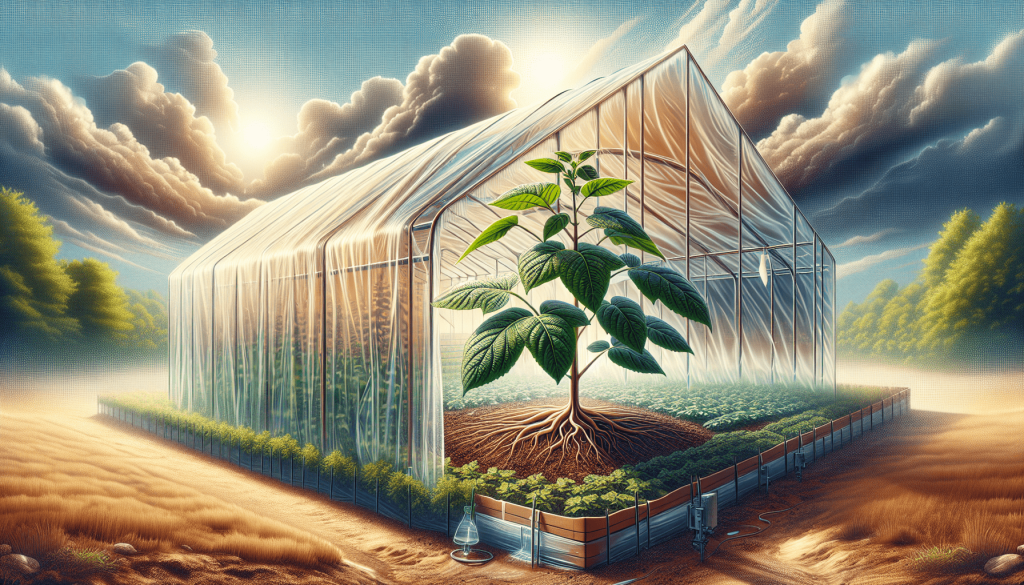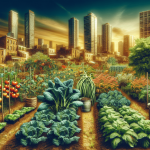This post may contain affiliate links. As an Amazon Associate, we may earn commissions from qualifying purchases.
Have you ever stood in your garden, looking at the sky, wondering how on earth you’re going to protect your precious plants from the wrath of the ever-changing weather? As someone who’s seen one too many wilting gardens after a storm or a heatwave, your curiosity is more than justified. You aspire to that glorious patch of green, blooming with life all year round, but oh, the elements can be so unforgiving! You’re not alone in this quest to save your garden from Mother Nature’s mood swings. Let’s chat about some charmingly effective ways to shield those lovely plants of yours from extreme weather.

Understanding Extreme Weather and Its Impact on Plants
Before you rush to your garden with protective gear and all sorts of contraptions, it’s worth knowing what kind of adversary you’re dealing with. Extreme weather encompasses a wide array of conditions that are atypical and severe. Commonly, these include heavy rainfalls, heatwaves, cold snaps, and powerful winds.
How Does Extreme Weather Affect Plant Life?
Plants, much like humans, need certain conditions to thrive. An overload or lack of these can lead to stress, damage, or even death for your leafy companions. Flooding can drown roots, scorching heat can wither leaves, frost can freeze tissues, and strong winds might break those delicate stems. Understanding these threats helps you better prepare and mitigate potential damage.
The Best Ways to Protect Your Plants
Armed with this knowledge, it’s time to strategize. Whether you face regular storms or rare cold fronts, these tactics can help you maintain a resilient garden.
1. Mulching: Your Plant’s Best Friend
You know that cozy feeling when wrapped in a warm blanket? Mulch does that for your plants. Applying a layer of mulch around your plants helps regulate soil temperature, retains moisture, and can even suppress weeds. Organic mulches break down over time, offering additional nutrients. In intense sun or during droughts, mulch ensures the soil remains cool and conserves water. Come winter, it provides insulation, protecting roots from frost bite.
2. Creating Windbreaks and Barriers
If ever you find yourself standing in a windstorm, you might notice plants bending, twisting, or outright snapping. Implementing windbreaks can be a life-saver. This doesn’t necessarily mean you need a towering wall. Planting a hedge or using structures like fences can reduce wind speed, offering a buffer zone for your plants’ sake. Adjust according to your needs, whether temporary covers in storm seasons or permanent installations for perennial windy locales.
3. Implementing Smart Water Management
Water is life; it can also spell trouble when mismanaged. Excess water often equates to root rot or nutrient leaching. Consider installing proper drainage systems to prevent flooding or implementing a drip irrigation system that conserves water while ensuring it reaches the roots directly. In droughts, be mindful of your garden’s water intake—using tools like moisture meters to gauge soil needs can make a world of difference.
4. Frost Protection Methods
Oh, those chilly nights that make you cling to your hot cocoa will do no favors for delicate blooms. When frosty conditions threaten, covering your plants with blankets, burlap, or specialized frost covers can preserve your garden beauties. If you can manage to keep the ground and therefore the root zone a few degrees warmer than the air, roots can continue to absorb water and nutrients.
| Frost Protection Method | Description |
|---|---|
| Covers (e.g., burlap) | Insulates plants against frost by trapping warmth. |
| Mulching | Adds insulation around roots. |
| Cold Frames | Structures that provide a buffer, like mini greenhouses. |
5. Shading Options for Searing Heat
Picture yourself sunbathing under a sky without a cloud—nice at first, less so when you’re scorched. Providing temporary shade can relieve your plants from the relentless sun. Options such as shade cloths, pergolas, or even strategically placing taller plants to cast shadows can be beneficial. This reduces evaporation rates, keeping the soil moist longer and your plants from drying out.
6. Selecting Weather-Resilient Plant Species
Sometimes, you need to leave the matchmaking to nature. Selecting plants native to your environment or bred for resistance to extreme conditions can alleviate sleepless nights over weather forecasts. These plants have evolved adaptations that increase their resilience to local adverse conditions, making them a safer bet for your garden.
7. Soil Management and Conditioning
High-quality soil is the foundation of strong, healthy plants. Regularly nurturing your soil through methods like composting improves its structure and ability to retain moisture. Well-aerated soil allows roots to develop robustly, crucial for battling adverse weather scenarios. Soil conditioning also improves drainage, crucial during heavy rains.
8. Utilizing Technology and Tools
Why not bring some modern tech into your garden haven? From smartphone apps that predict weather changes to automated watering systems that adjust based on specific conditions, technology can be a game-changer. While the initial setup may take effort, the long-term benefits, such as saving time and optimizing plant care, make it worthwhile.
Tips for Monitoring Your Garden
Caring for plants isn’t just about taking action; it’s equally about observation. Keep a watchful eye for signs of stress or damage and react accordingly. Documenting changes or implementing a routine for checking plant health can provide valuable insights.
Regular Garden Inspections
Like catching up with an old friend, a regular walk through your garden can alert you to issues you might not notice from a distance. Check for signs of pest activity, waterlogging, discoloration, or unusual leaf patterns.
Recording Weather Patterns
Maintaining a simple journal that notes weather patterns alongside effects on your plants is akin to having a user manual for your garden. Over time, this record helps you spot trends and tailor your protective measures more effectively.
Identifying and Responding to Plant Stress
Stressed plants can often “tell” you when something’s amiss, whether through drooping leaves, discolorations, or reduced growth. Recognize these signs and adjust your care routine – whether that means more water, shade, or bolstering protection against wind.
Practical Examples of Plant Protection
It might reassure you to see how others have navigated similar challenges. Imagine Jane, who lives in an area prone to heavy rainfall. She rerouted excess water away using a series of charming old-fashioned rain chains that lead into a network of underground pipes. Or consider Tom in a frost-prone region who made artful use of terracotta pots turned upside down over his sensitive young shoots throughout winter.
Enhancing Garden Resilience
In the end, cultivating a garden that can attire itself modestly yet reliably through Mother Nature’s seasonal fashion shows —from brisk to sizzling and everything in between— is wholly achievable. It’s a dance you’ll learn with time; a measure of trial, a good ladle of error, but eternally worth the effort. After all, when the storm passes, and your garden stands resilient in a surprisingly coordinated choreography of rich greens and jubilant blooms, you’ll realize that the secret isn’t in overpowering nature—it’s in harmonizing with it.
As the sun sets on stormy discussions and vibrant sunrise rewards you for protecting and nurturing with care, know that each step reflects your special gardening narrative, written under your very feet with nature’s ink. Equip yourself with knowledge, some flair, and creativity, and may your garden flourish regardless of what the forecast brings.









